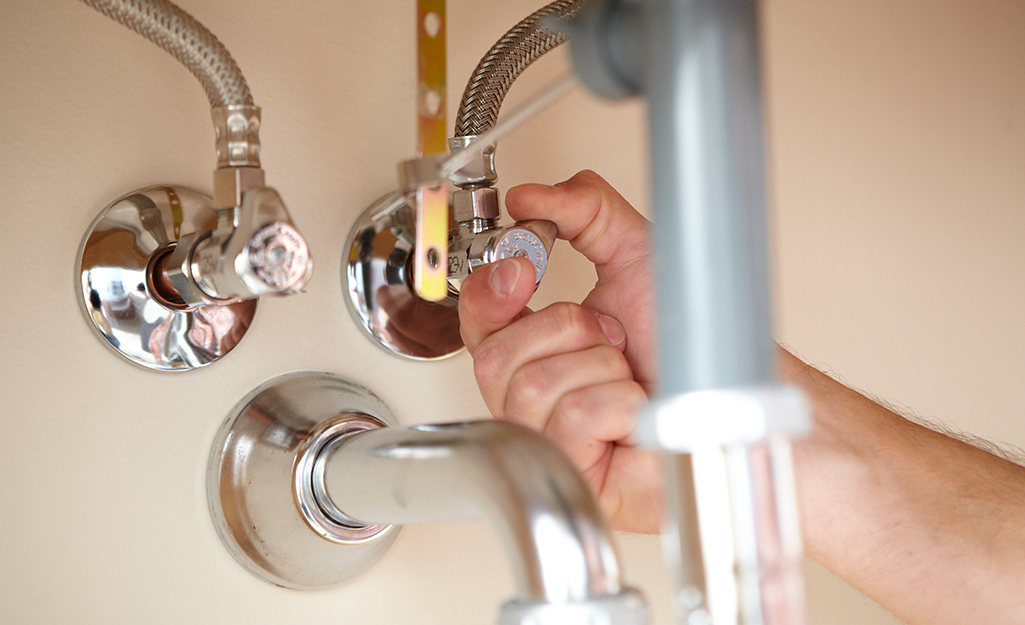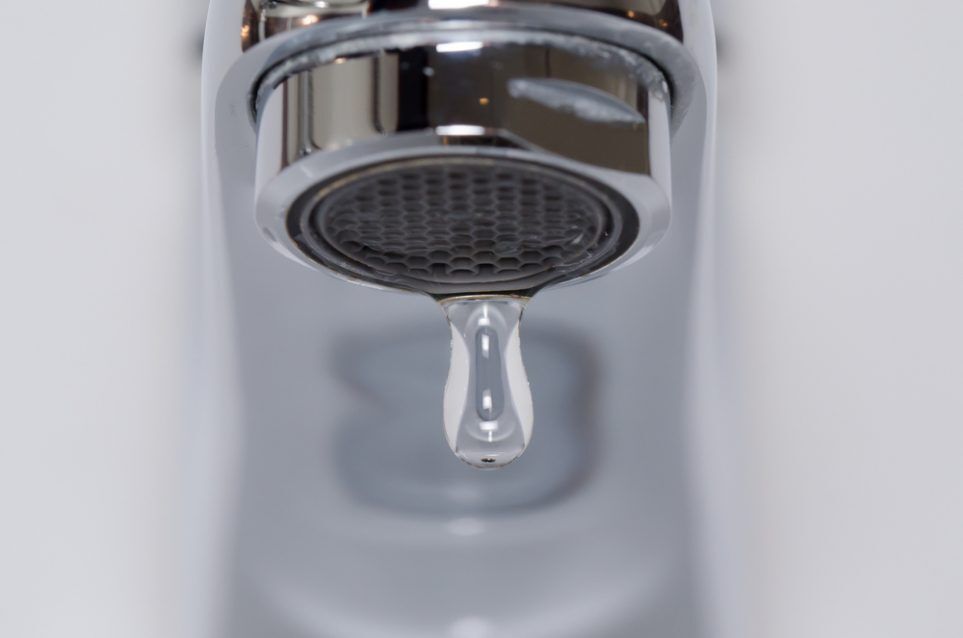Uncovering the Importance of Fixing a Faulty Faucet
Uncovering the Importance of Fixing a Faulty Faucet
Blog Article
The author is making several good pointers about Water Dripping from Faucet: Why and How to Fix in general in this content on the next paragraphs.

Leaking faucets might look like a minor aggravation, however their effect goes beyond simply the annoyance of the audio. From drainage to incurring unneeded monetary costs and wellness dangers, ignoring a trickling faucet can bring about various effects. In this short article, we'll explore why it's crucial to address this usual home problem promptly and successfully.
Wastefulness of Water
Environmental Effect
Trickling taps contribute substantially to water wastefulness. According to the Environmental Protection Agency (EPA), a solitary tap leaking at one drip per second can throw away greater than 3,000 gallons of water per year. This not only stress water resources however additionally influences ecological communities and wildlife based on them.
Step-by-Step Overview to Repairing a Dripping Faucet
Tools Called for
Prior to attempting to take care of a trickling faucet, gather the needed devices, including an adjustable wrench, screwdrivers, substitute components (such as washing machines or cartridges), and plumber's tape.
Common Faucet Issues and Their Solutions
Determine the sort of tap and the specific issue triggering the drip. Typical issues consist of damaged washing machines, rusty shutoff seats, or malfunctioning O-rings. Refer to manufacturer directions or on the internet tutorials for detailed support on fixings.
Financial Expenses
Boosted Water Costs
Past the environmental effect, trickling faucets can inflate water bills substantially. The accumulated wastefulness gradually translates right into higher utility expenses, which can have been prevented with prompt repair services.
Potential Property Damage
In addition, prolonged leaking can bring about damage to fixtures and surface areas bordering the tap. Water accumulation can cause staining, rust, and also architectural issues if left unattended, resulting in extra repair service expenses.
Wellness Issues
Mold and Mildew Development
The constant presence of moisture from a dripping tap develops a perfect atmosphere for mold and mildew and mold growth. These fungis not only endanger interior air quality yet also position wellness risks, specifically for people with breathing problems or allergies.
Waterborne Conditions
Stagnant water in trickling faucets can come to be a breeding ground for germs and other pathogens, boosting the danger of waterborne illness. Contaminants such as Legionella germs grow in stagnant water, potentially leading to significant diseases when consumed or inhaled.
Do it yourself vs. Professional Repair
Benefits and drawbacks of Do It Yourself Repair Service
While some might attempt to repair a dripping faucet themselves, do it yourself repair services include their own set of obstacles. Without proper understanding and devices, do it yourself efforts can aggravate the issue or lead to incomplete repairs, prolonging the issue.
Advantages of Hiring an Expert Plumber
Working with a specialist plumber makes certain that the underlying reason for the trickling faucet is addressed properly. Plumbings have the competence and tools to diagnose and fix tap issues effectively, conserving time and decreasing the risk of additional damages.
Ecological Responsibility
Individual Contribution to Preservation
Taking responsibility for fixing leaking faucets lines up with wider initiatives towards water preservation and environmental sustainability. Every individual's actions collectively make a considerable impact on preserving valuable sources.
Sustainable Living Practices
By prioritizing prompt repairs and taking on water-saving routines, individuals contribute to sustainable living methods that benefit both existing and future generations.
Preventive Measures
Regular Upkeep Tips
To prevent trickling taps, perform regular maintenance such as cleaning up aerators, inspecting for leaks, and changing worn-out components quickly. In addition, consider setting up water-saving tools or upgrading to a lot more reliable fixtures.
Relevance of Prompt Repairs
Attending to trickling faucets as soon as they're discovered protects against more water wastage and potential damage, eventually conserving both water and cash in the future.
Impact on Residential Property Worth
Assumption of Well-Maintained Property
Maintaining a home in good condition, consisting of attending to maintenance issues like dripping taps, boosts its regarded value and value among possible purchasers or occupants.
Impact on Resale Worth
Properties with properly maintained plumbing components, including faucets, command greater resale worths in the property market. Addressing trickling faucets can add to a positive impact throughout home assessments and arrangements.
Final thought
Resolving a leaking tap surpasses simple convenience; it's a crucial step towards conserving water, lowering financial expenses, and safeguarding health and wellness and residential or commercial property. Whether through DIY repair work or specialist assistance, acting to take care of dripping faucets is a little yet impactful method to promote accountable stewardship of sources and add to a much healthier, extra lasting future.
How to Fix a Dripping or Leaky Faucet
A leaking faucet is one of the most common problems that homeowners encounter, but it being commonplace doesn’t make it any less annoying. The constant drip drip drip of a leaking bathtub faucet, showerhead, or sink tap can disturb your home’s serenity. Left neglected, a dripping faucet can also result in higher water bills and discoloration or mold growth in your sink or plumbing fixtures.
Fortunately, you don’t have to be a trained plumber to know how to stop a dripping faucet. With some basic tools, replacement parts, and a little patience, leaky faucet repair is a breeze. In this article, we’ll explain what causes dripping faucets and how you can fix them.
What Causes a Leaking Faucet?
Kitchen and bathroom faucets come in all manner of designs, but most involve some combination of valves, O-rings, seals, and washers. The O-ring is usually the weakest link, but any one of these pieces can wear down over time. Heat, moisture, temperature fluctuations, minerals, mold, and movement can contribute to warping and corrosion, breaking the watertight seal. This just comes with the territory of being a homeowner. Everything is always subject to wear and tear, and some component parts of your appliances and fixtures need to be replaced on occasion. At least replacement O-rings are cheap!
More rarely, dripping faucets can be a symptom of excessively high water pressure. Were this the case in your home, you would probably notice that the leak is not isolated to one faucet. Water pressure issues are harder to resolve on your own. We recommend contacting a professional plumber if you suspect your water pressure is too high.
How to Fix a Dripping Faucet
Pipe wrench or monkey wrench Allen wrench set Screwdrivers Old towel or rag Shut off the water.
Before you do anything, you need to turn off the water to keep from drenching your kitchen or bathroom. You should find a valve under the sink and against the wall. Once you’ve turned this valve, try turning the faucet on to confirm that the water source has been cut off.
If you can’t locate your local valve for the faucet you’re working on, you can always shut off the water to the house at the main valve. Of course, this will prohibit anyone from using the sinks, showers, or toilets while you’re working on the faucet that’s giving you trouble.
Plug or block the drain.
You’ll be disassembling the faucet and removing some small bits of hardware. Plug the drain with a stopper or rag to avoid the possibility of a small screw falling into your P-trap.
Take apart the faucet assembly.
There are several varieties of kitchen and bathroom faucets, each with its own manner of assembly. For detailed instructions on how to disassemble your faucet, you can refer to the fixture’s manual or contact the manufacturer. If you know whether you have a ball, disc, cartridge, or compression faucet, you can find detailed schematics online.
In general, you need to begin by removing the faucet handles. You might notice a small screw that you’ll need to remove with a screwdriver or Allen wrench. If you don’t see any visible securing hardware, it’s likely hidden under a decorative cap that can be unscrewed or popped off with flathead screwdriver.
Remove each piece methodically, consulting a schematic when necessary. Take notes or arrange the pieces in such a way to make it easier to correctly reassemble the faucet later.
Remove the cartridge.
Once you’ve removed the handles and securing hardware, you should be able to remove the valve cartridge or stem. Some cartridges will slide right out. Other faucet models will require you to loosen a nut with a pipe wrench before you can remove the valve stem.
Examine the exposed hardware.
With the cartridge or stem removed, inspect the component parts. Check the rubber O-rings for wear and tear. Also examine the seat washer for corrosion or other damage. These pieces are usually the responsible parties for a dripping faucet, but it’s worth inspecting the other component parts while you have the faucet disassembled.
Find replacement parts.
Once you’ve identified which faucet component has failed, find an identical replacement. Your local hardware store should have O-rings, seat washers, and other standard components in stock. If you have a luxury or uncommon faucet, you may have to contact the manufacturer for a replacement part.
It’s a good idea to take your old parts with you to the hardware store so you can compare them with the store’s inventory and be sure you’re purchasing the correct replacement.
Reassemble the faucet.
With your new parts in hand, reconstruct the faucet and handles. Don’t be tempted to overtighten screws or nuts. You might think this could create a better seal, but it can instead damage or bend a delicate part of the assembly and create a new problem for you.
Turn on the water and test the faucet.
The only thing left to do is test your work. Unplug the sink, turn the water back on, and try the faucet. Congratulate yourself on a job well done!
https://www.libertyhomeguard.com/how-to-fix-a-dripping-or-leaky-faucet/

Hopefully you enjoyed reading our piece about . Thank you so much for spending some time to read our article post. Sharing is caring. One never knows, you may very well be helping someone out. I value your readership.
Report this page